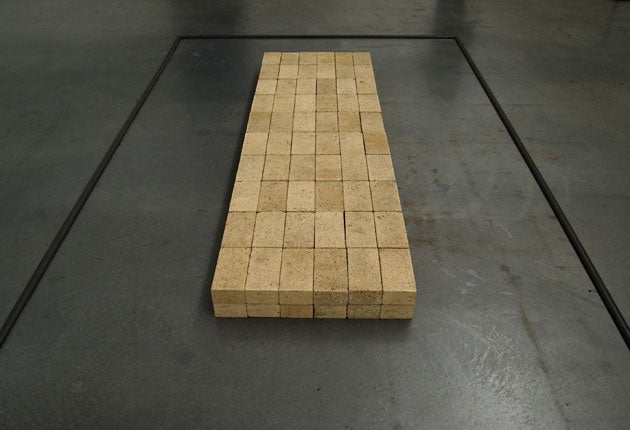How to build controversy from a pile of bricks
Newly released letters show how the Tate Gallery fought back in one of the great modern-art furores

Seldom has the subject of masonry ignited such passion. Yet the explosion of interest that surrounded the Tate Gallery's exhibition of US artist Carl Andre's Equivalent VIII, better known as The Bricks, triggered a national debate.
Now, more than 30 years after Andre's 120 bricks provoked outrage, newly released documents show how bitter that debate became and how the embattled Tate fought its corner. They reveal how the gallery was shocked by the ridicule it was subjected to after buying what appeared to be ordinary bricks.
Equivalent VIII was purchased by the Tate for £2,297 in 1972 and exhibited without controversy. The curators were taken aback by the criticism when it was shown in 1976.
Andre described his work as conveying a sense of "wading in bricks" and like "stepping from water of one depth to water of another depth", but many people expressed disappointment after failing to see the artist's creativity in arranging the 120 identical bricks in two uncemented layers, in a six-by-10 rectangle.
Some believed anyone with access to bricks could have made it themselves and believed the Tate had been "conned". As well as verbal abuse and a flood of letters, one affronted visitor threw a bucket of blue dye over the exhibit. Fortunately the liquid washed off.
While stoically defending its corner, privately the Tate was seething over a damning editorial in the art history journal The Burlington Magazine, which accused it of buying "showy work which may well be regarded in a few decades as trash".
According to correspondence revealed by The Art Newspaper, the Tate's curators were furious and demanded the magazine publish a rebuttal. To their annoyance the then editor, Benedict Nicolson, refused to print an article by Richard Morphet, a Tate curator, insisting he had no space.
This prompted Sir Norman Reid, the Tate's director, to step in. In a stiff note, he wrote: "We have put up with many ill-informed attacks from the daily press which have not been worth the trouble of a serious reply. With The Burlington the situation is different and we expect to be treated with the seriousness and courtesy with which we regard your own writing."
In the face of the onslaught The Burlington demanded cuts to the article. This was refused and the magazine eventually ran it over four pages in its November 1976 issue. In it, Morphet insisted that "in the Tate's view the Andre will, in time, be generally accepted as among the most important art of its period."
Today, the Tate still holds that view. A spokeswoman said: "The controversy surrounding Andre's piece was well known at the time, and there were many voices of opposition when it was acquired. The piece represents a pivotal moment in art and remains an iconic piece that highlights the trajectory of the history of art."
The Tate believes that Morphet's stance has been vindicated. The piece, it argues, has become one of the best-known pieces of modern art in its collection. A similar work by the same artist has sold for more than $1m. Equivalent VIII was on show at the Royal Academy earlier this month in its Modern British Sculpture exhibition.
Subscribe to Independent Premium to bookmark this article
Want to bookmark your favourite articles and stories to read or reference later? Start your Independent Premium subscription today.

Join our commenting forum
Join thought-provoking conversations, follow other Independent readers and see their replies